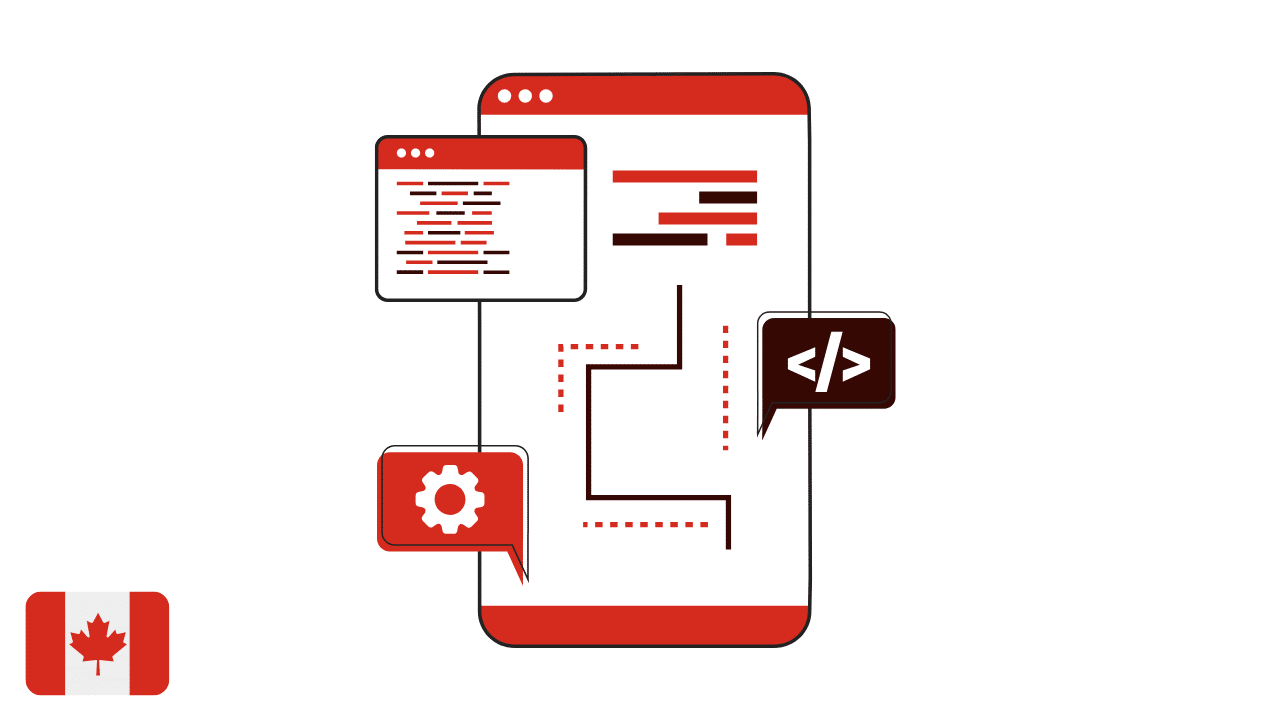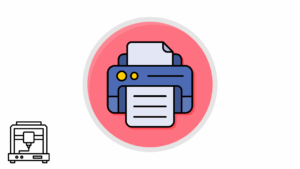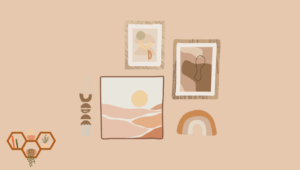If you build apps in Central Ontario, you can feel the shift. Toronto teams are raising the bar on accessibility and AI assisted personalization. Barrie startups bring product discipline from manufacturing and health tech. Midland and Orillia push for offline friendly services that work in cottage country, on trails, and during busy weekend traffic. The result is a regional UX boom. People expect local apps to load fast, work without perfect signal, and speak with a helpful, trustworthy voice. Below you will find four hot design trends that are shaping real projects across the corridor, a playbook for shipping faster with quality, and a practical table you can copy into your roadmap In addition, you can learn more from convertedge.ca. In this article, we’ll explore the central Ontario UX boom and share 4 hot design trends driving positive app development in Toronto, Barrie, Midland, and Orillia.
Trend One, Accessibility As A Product Advantage
Accessibility is not decoration, it is conversion. When a sign up flow reads cleanly for someone using VoiceOver on the GO Train, it reads cleanly for everyone. When color contrast hits the mark, screens remain usable on bright sidewalks near the waterfront. Central Ontario teams treat accessibility as a sales feature because it removes friction at the exact moment a new user decides to stay.
Build habits that compound. Use a single type scale, then test it on a mid range phone. Set color tokens with passing contrast and lock them in your design system. Add focus states that are visible, not barely there. Label controls and icons with short nouns, not clever metaphors. Give media real alt text and transcripts that include speakers by name. The work pays for itself through lower support and better reviews.
Trend Two, Offline First And Low Connectivity Flows – App Development in Toronto, Barrie, Midland & Orillia
Weekend traffic, lake effect weather, basement clinics, and older buildings all have one thing in common, spotty coverage. Teams in Barrie, Midland, and Orillia build around that reality. Apps cache the next screen’s data, not only the current screen. Forms save drafts for later. Maps and receipts store light local copies. Push prompts appear when the device comes back online rather than turning a moment into an error screen.
Design with a simple rule, every critical task should tolerate a connection hiccup. Ticket scans, appointment check ins, work orders, and curbside pickup flows should work offline and sync when possible. Use human language in states, you are offline, we saved your work, we will sync it when you reconnect. People reward calm apps with loyalty.
Trend Three, Personalization With Consent And Taste
AI lowers the cost of thoughtful UX, yet trust is the boundary. Toronto product teams are setting a tone that blends personalization with clear consent. Onboarding asks for goals in plain language. Content feeds start with a low risk default, then learn safely. Microcopy tells the truth about what will change if someone shares location or health data. Recommendations arrive with one line reasons that can be dismissed or tuned.
You do not need to predict everything to feel helpful. Offer small adaptive touches that respect time and attention. Speed up a scheduler by showing the nearest slots first. Prefill addresses or allergies when users allow it. Rotate tips based on patterns you can explain, people like knowing why the app behaves the way it does. If the model suggests something wrong, give a one tap way to correct it. Good personalization feels like a host, not a salesperson.
Trend Four, Service Design That Connects City And Cottage – App Development Trends in Toronto, Barrie, Midland & Orillia
Central Ontario products increasingly live across contexts, a Toronto clinic that runs seasonal pop ups north of Highway 9, a grocery brand that serves commuters and lakeside kitchens, a municipal app that helps residents and visitors. The best teams think beyond a single screen and design for the whole service. Wayfinding is baked into the interface, you always know what will happen after you tap. QR codes and short links bridge print and digital at festivals and markets. Receipts carry clear next steps, track an order, rebook, talk to a human, and every step opens directly in the right place of the app.
Service design shows up in little things. Estimated times respect local traffic patterns. Pickups include curbside descriptions that make sense to someone new to the area. Forms translate medical or legal jargon into everyday words. When a process spans systems, your app remains the single source of truth, it confirms what happened and what comes next. This reduces stress for new residents and visitors, and that is a competitive edge.
The Central Ontario UX Opportunity Table
| City Or Area | What Users Expect | UX Opportunities In 2026 | App Ideas That Fit | Team KPI To Track |
|---|---|---|---|---|
| Toronto | Inclusive design, fast support, calm personalization | Build accessible design systems, consent forward AI, clear privacy notes | Health and finance apps with goal based onboarding, learning feeds, clear receipts | Task completion on mobile, opt in rates with low churn |
| Barrie | Practical flows that never drop data, strong field use | Offline drafts, reliable sync, simple error recovery, readable microcopy | Work order and logistics apps, clinic intake, trade service portals | Draft save rate, sync success within thirty minutes |
| Midland | Clear wayfinding for visitors, low signal maps | Light maps with offline tiles, QR bridges from print to app, on site signage tie in | Tourism and marine services, parks and events, pickup and repair scheduling | First session success without support contact |
| Orillia | Family friendly forms, curbside clarity, accessible payments | Short forms with save and resume, clear pickup prompts, camera friendly barcodes | Grocery and pharmacy curbside, recreation booking, utility billing | Repeat order time, barcode scan success on older phones |
Copy this table into your planning doc. Treat each opportunity as a micro project you can finish in one sprint using app development trends in Toronto.
How To Ship Faster Without Giving Up Quality: App Development Trends in Toronto, Barrie, Midland & Orillia
Set a weekly cadence. Publish something that improves real user moments, then measure it. Make design tokens and components your first investment. A small system with type, color, spacing, and five core components, button, input, card, sheet, skeleton, will speed every future change. Write UX copy in your Figma files, not as an afterthought. A short sentence can save two screens of confusion.
Keep one performance rule, Largest Contentful Paint under two and a half seconds on a mid range phone at the mall or on a local bus. Achieve this with image compression, deferred scripts, and fewer network calls. Test where people actually use your app, not only at your desk. The best teams in the region carry a single page checklist, device, network, legibility, focus states, motion preferences, and run it every Friday.
Microcopy That Feels Local And Helpful
Words carry weight in Central Ontario because audiences are mixed. Write like a careful neighbor. Replace jargon with actions, book a time, renew, start pickup. Avoid cute labels that slow busy users. When something goes wrong, own the moment and help, we saved your draft, try again when you have signal, or tap to call the desk. Use titles that say what the screen does, not what the team calls it. Small language decisions turn tentative users into confident ones.
Motion And Micro Interactions, Use For Clarity
Micro animations help orientation, they should never become a light show. Use them to confirm a scan, to reveal a result, to move attention to the next required field. Keep durations short. Respect motion settings on the device, reduce when the user asks. Motion that serves comprehension reduces cognitive load, especially in busy environments such as stations and clinics.
A Five Day Sprint You Can Run This Month
Day one, pick a single end to end task that matters, for example curbside pickup, check in, or a work order update. Day two, cut steps and add draft save. So, in Day three, raise contrast, check focus states, and rewrite labels. Day four, add an offline state that explains what will happen next. Day five, test outside, then ship. Repeat with another task next week. Momentum builds trust, inside your team and with your users.
Common Mistakes And Easy Fixes
- Too many fields in a form, fix by asking only what changes the next step.
- Invisible rules, fix by explaining what will happen and why you need permission.
- Fragile flows that break offline, fix by saving progress and syncing later.
- Fancy motion that hides information, fix by using simple reveals and clear confirmation.
- Accessibility treated as a checkbox, fix by folding it into tokens, components, and content from the start.
Frequently Asked Questions
Do I Need To Build For Every Platform At Once
No. Start with the surface that handles the most critical tasks, then add the others. A clean web experience and a small focused native app serve most local needs.
How Do We Measure UX Without A Big Research Team
Track one success metric per flow, completed booking, paid invoice, scanned ticket. Supplement with two sentiment questions after real tasks, did this save you time, would you do it this way again.
Will AI Replace Designers Here
AI removes repetitive steps, it does not replace judgment. Use it for variants, summaries, and first passes. Keep humans for ethics, context, and taste.
How Can Small Teams Compete With Larger Toronto Studios
Pick local service problems that big teams overlook, design one perfect flow, and partner with a few organizations that use it every day. Focus wins.
App Development Trends in Toronto, Barrie, Midland & Orillia: Final Thoughts
Central Ontario is turning into a proving ground for responsible, practical UX. Apps are faster, kinder to low connectivity, and more transparent about how they learn. The four trends above are connected by one goal, remove friction so people can get on with their day. If you design with accessibility, resilience, consent, and service thinking, you will build products that locals recommend to friends, coworkers, and visitors. That is the recipe for positive, durable growth from Toronto to Barrie, across Midland, and into Orillia.








